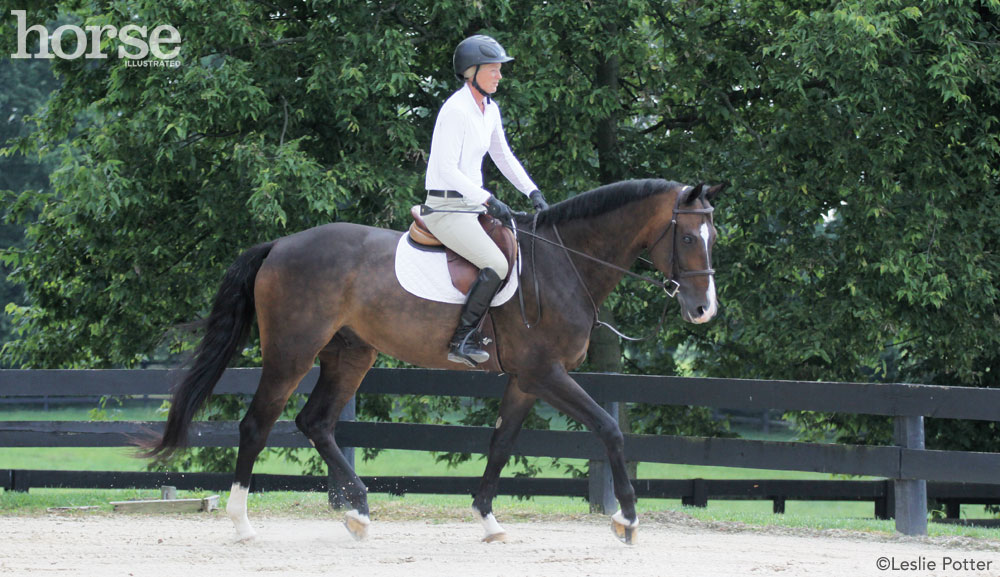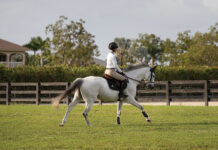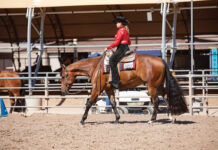Q: Sometimes my trainer will tell me to ask for a more active trot. As soon as I ask for it, she will remind me, “Not faster—more active.” What does that really mean?

A: An active trot is all about the rhythm. You don’t want your horse to increase his speed; you want him to step a little further under himself with his hind legs to allow the withers to elevate.
In a truly active trot, if you could look at the hoof prints in the arena, your horse would be slightly overstepping his tracks. For example, the hoof print from his front left hoof would be overstepped by his back left hoof.
An active trot is about compressing and building the energy while keeping the same rhythm and cadence.
As your horse is trotting, apply your leg in rhythm with the horse. If you want his right hind to step further underneath him, apply your right leg as his right hoof is leaving the ground. You’re asking him to step a little further.
The key here is to cue when his hind hoof is leaving the ground. If you ask when the hoof is still on the ground, he can’t do anything. He’s committed to the hoof being right there and he can’t step any further.
If you keep your leg on your horse the entire time, rather than pressing in rhythm, you’re not being clear with your horse. At the right moment in the trot stride, that moment when his hoof is leaving the ground, ask your horse to step under himself and then contain that energy with your hands.
If you don’t regulate the trot with your hands, you’ll get a bigger trot, but it will be extension with longer steps rather than more active. The hand is a form of communication. You’re not going to stop a horse with your hand. You’re going to ask a horse to stop with your hand. Therefore, use your hands when he can answer.
For example, when the horse’s right leg is coming forward, your right hand should be able to hold the right side of the horse to keep his right side from going further forward.
In an active trot, you’re compressing the energy from the front end when you add energy to the hind end.
Ronnie Quest has been in working with horses and riders in the English discipline for over 40 years. He and his wife Jaime own and run Equestrian Stables in Lubbock, Texas.
This article originally appeared in the December 2015 issue of Horse Illustrated magazine. Click here to subscribe!





